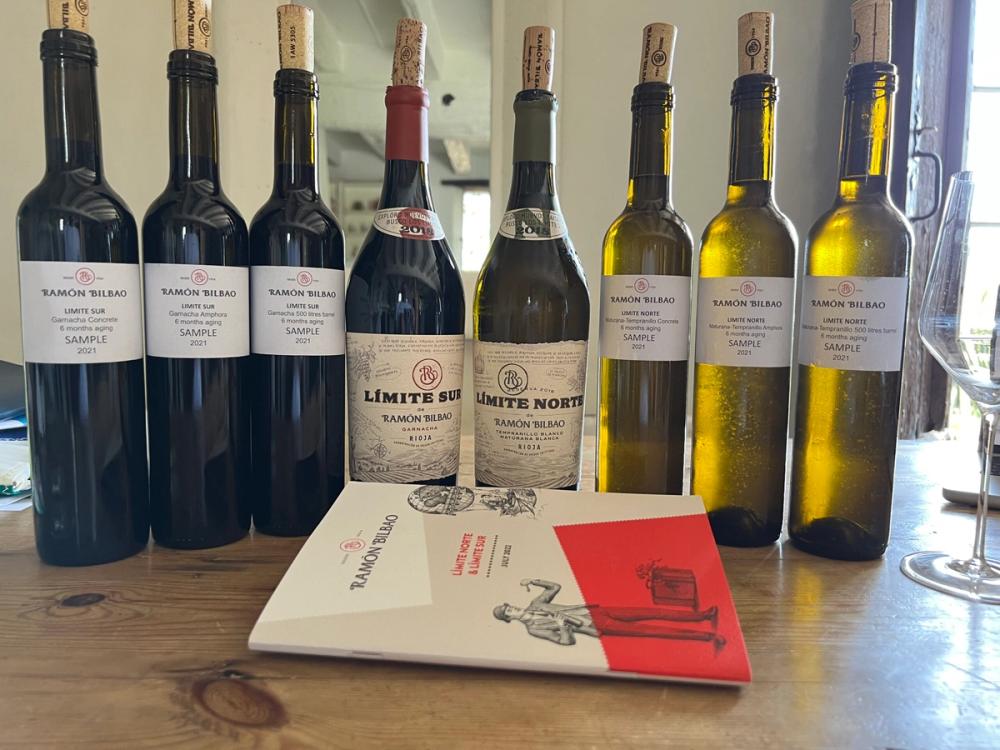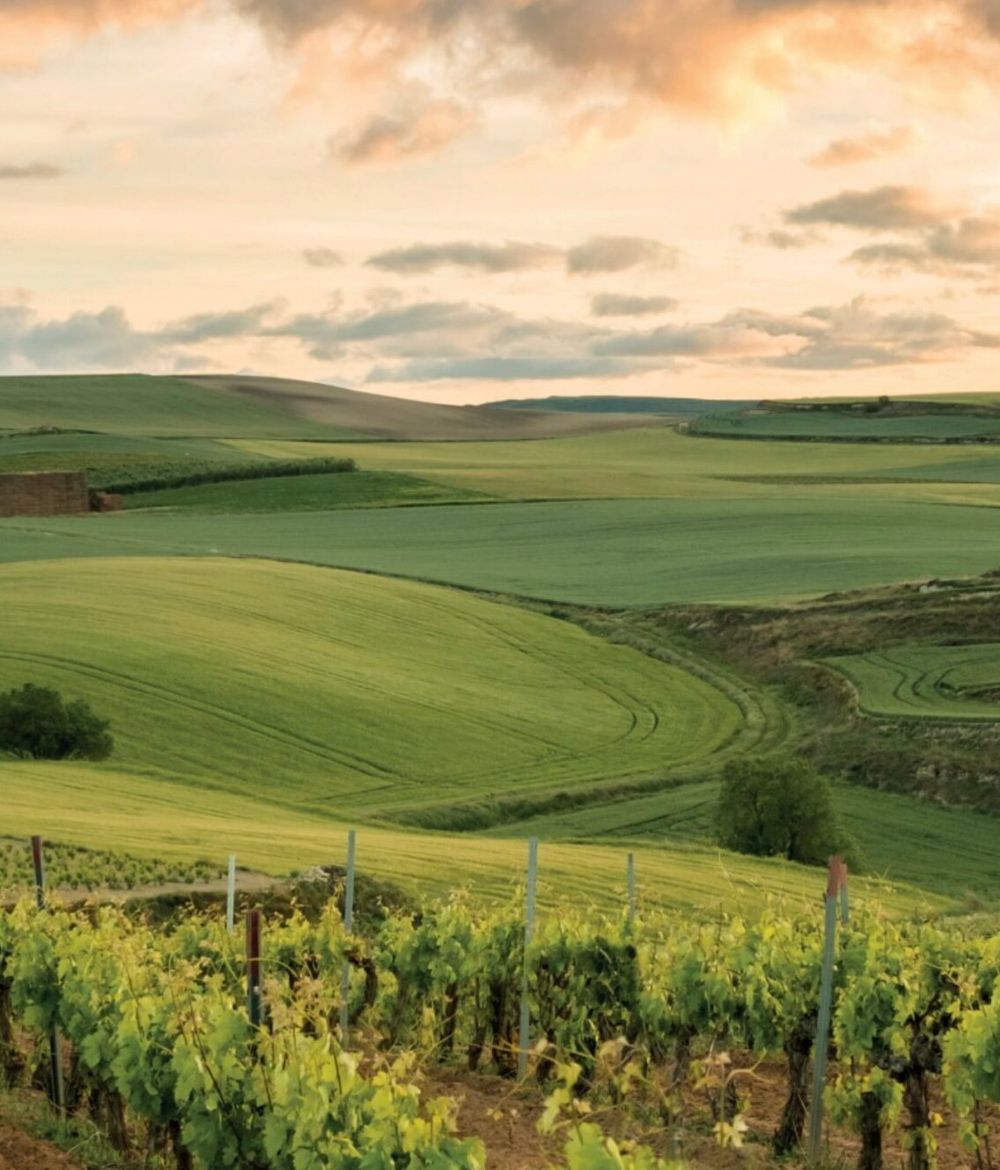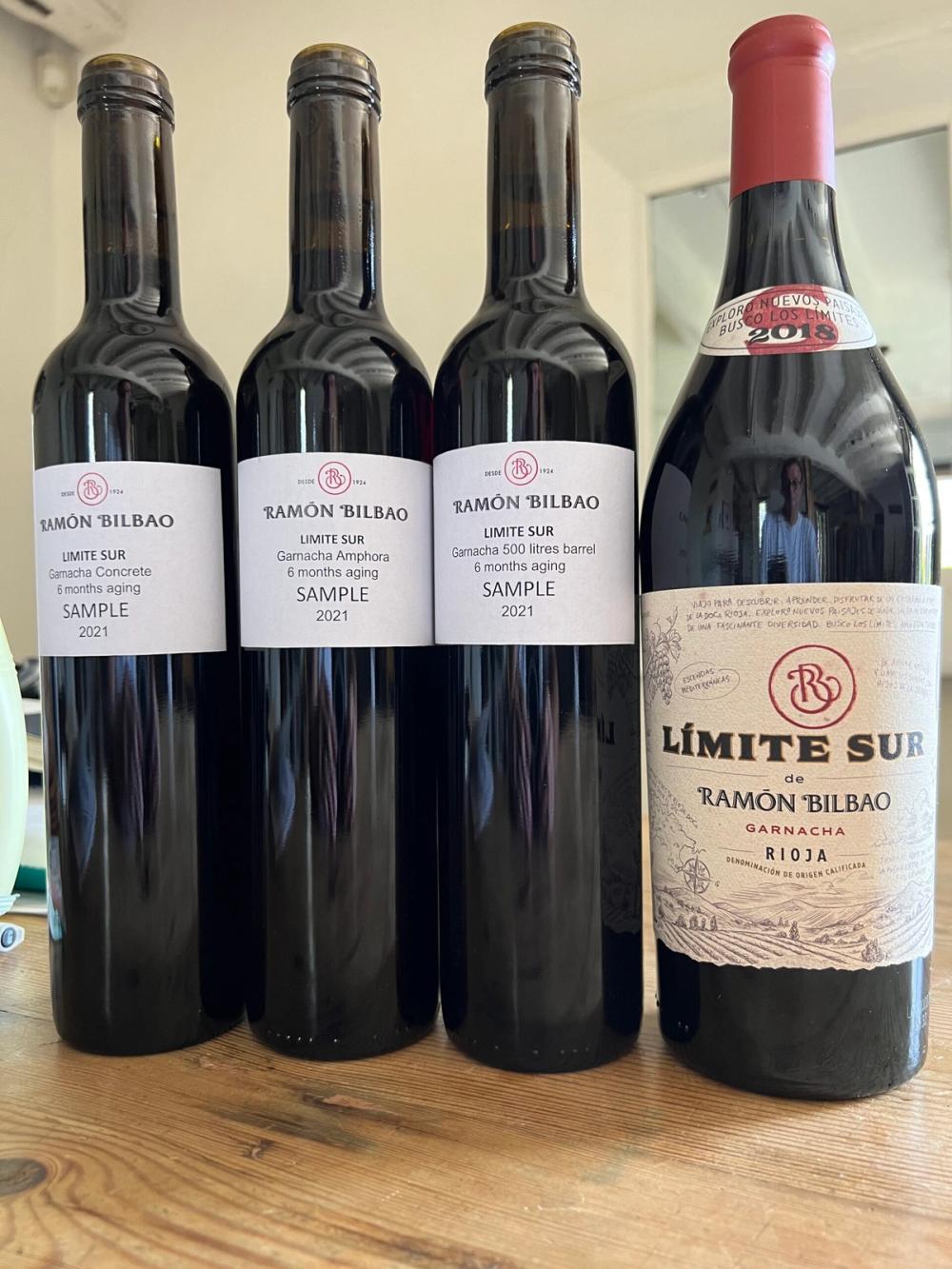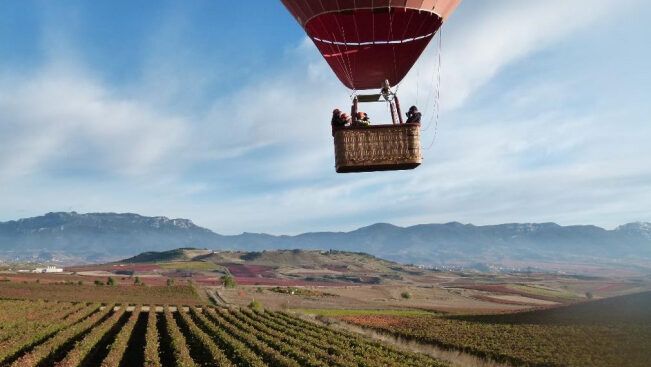One of the key drivers for Ramōn Bilbao planting grapes at high altitude and in the cool North of Rioja is to combat the warming effects of climate change.

Rodolfo Bastida, July 19, 2022
“I was just travelling through Galicia,” so begins a worried looking Rodolfo Bastida as our Zoom tasting gets underway, “and I came close to four very big fires, so close. It is very worrying.”
It was not lost on anyone attending this online masterclass with Ramōn Bilbao head winemaker Rodolfo Bastida, titled Exploring the Extremes Of Rioja, that it fell on the same day that the highest temperature in the UK was recorded (along with countless apocalyptic fires in the rest of Europe). Heat spikes and climate change generally are pushing winemakers upwards and Northwards (if they are based in the Northern hemisphere) to plant vines in order to achieve and maintain freshness in their wines – a key backstory to today’s tasting.
Bastida has been one of the most vociferous exponents of pushing the envelope in Rioja since he joined Ramōn Bilbao in 1999 – believing that Rioja still has many more possibilities, more even than the many changes it has undergone over the past decade or so. The two wines he was presenting – Límite Norte and Límite Sur – are part of this overall philosophy, both wines being made from fruit grown at the two most extreme corners of the region, Cuzcurrita del Río Tirón in the North for the white wine Límite Norte and Monte Yerga in the South East of Rioja for the red wine Límite Sur.

Breaking each wine down into their component parts
Límite Norte – a blend of Maturana Blanca and Tempranillo Blanco
Before Bastida planted vines in 2015 along the beds of the Oja and Tiron rivers at the foot of the Obaranes Mountains in Rioja’s most northern border, Cuzcurrita, the only crops you were likely to see here were wheat, beetroot and potato. This is Rioja’s coolest region with the average temperature at harvest time being a low 15°C. But climate change has reduced the severity of the frost here and the soil, which is rich in smooth pebbles, helps retain heat. Bastida and his team are finding that their hunch was correct and they are managing to achieve full ripeness and also keeping a firm backbone of acidity in the fruit.
The grapes they planted are Maturana Blanca and Tempranillo Blanco, which they planted 2.5 hectares of each on a South-facing plateau 450m high. The finished Límite Norte wine is a 50/50 blend of the two grapes – both varieties noted for high acidity, although the Tempranillo Blanco which is a little more finnicky in terms of vineyard management has a tendency to drop its acidity very sharply during harvest which is why it’s picked earlier and delivered to the winery first. Both varieties like cool regions which is just as well seeing as they’re in Cuzcurrita.
Interestingly, while Tempranillo Blanco is one of the newest Spanish varieties dating from 1988, Maturana Blanca takes credit for being the oldest mention of a variety in Rioja, when it was called Ribadavia.

Cuzcurrita: the outer limits of Rioja
Because this is the always-inventive Ramōn Bilbao we are talking about, both varieties are fermented in concrete and then a third each aged in concrete, amphora and barriques. To demonstrate what each vessel adds, we tasted individual samples of the Maturana/ Tempranillo blend from the 2021 harvest and then tasted the finished wine, a 2018 vintage which is the latest release.
The concrete sample had a more pronounced floral aspect, it was fine and elegant, in the mouth it was pure, fresh, with decent body, a stony texture and pronounced acidity. The amphora sample had more presence and felt more evolved perhaps due to the permeability of the oxygen. There were citrus and pear notes, it had greater persistence in the mouth, was more tense and nervy, complex and mineral-driven, with more tannin. The third sample, from a softly-toasted 600-litre French cask, was the most complex with a creamy character on the nose and in the mouth (a bit like cream soda), it was very long in mouth with a real edge to the finish. Bastida uses this part of the blend to suppress the fruity aromas and hide the terroir and to help the wine age.
All three (spontaneous) fermentations spend six months on fine lees in 225-litre French casks after assemblage and then one year in bottle. “There are no rules for his type of wine,” says Bastida and just as well as this is a fascinating wine – white Rioja with a real twist. It is dry, rounded, ripe and full-flavoured, complex, oleaginous with firm acidity, fresh nuts mingling with cream and freshly zested lemon. It’s very fresh for a 2018 and good with and without food. And, having tasted the very different component parts separately, you could pick them out in the finished wine. Alcohol is 12.9% abv.

Límite Sur – 100% high altitude Garnacha
Límite Sur is a 100% Garnacha from the most South-Eastern corner of Rioja in the Monte Yerga region where Ramōn Bilbao bought a 90-hectare vineyard and has been experimenting with what a 500-750m high North-facing plot can bring – better acidity, more colour and concentration.
Garnacha has been the main variety here since the 1970s although as we all know it is very much having a renaissance, particularly in Spain. Ramōn Bilbao owns 28 hectares of it here, 7 hectares from 1977 and 21 hectares planted in 2014. At altitude it has a lower concentration of tannins, less colour intensity, greater freshness and primary aromas with herbal and floral notes. The fruit tends towards red rather than black with raspberry notes apparent.
Winemaking-wise the juice has a cold maceration for about 6-7 days in order to preserve the floral character of the wine. The wine is then fermented in concrete at 24°C with Bastida using 5-10% of stems to add freshness and extra tannins; the extraction is on the gentle side. Like the white wine, Límite Sur is aged in three formats – concrete, amphora and large barrels – the wine is then assembled and aged in 225-litre French barriques.
We tasted samples of the 2021 vintage (which Bastida rates as very good) from the three different ageing formats and then the final 2018 wine.
The concrete-aged Garnacha was intense, concentrated and as pure as you like. There were raspberry, violet and wild bramble notes. There was a touch of tannin but the main drive was fresh, pure juice, great acidity and a lovely fine texture. To be honest this could make a single cuvée on its own and it would sell like hot cakes. The amphora-aged sample was even more floral with intense violet notes (the micro-oxygenation helping perhaps with the aromas). There was blackberry in here and a fine texture, with noticeable greater evolution. The barrel sample showed its youth and was clearly too young, having said that it has complexity, was toasty and had a soft vanilla, bitter character (helped by the use of stems).
The finished wine, the 2018 Límite Sur, which is only the second vintage was light to medium ruby-violet; there were red and black fruits, violets, toast, a hint of cooking spice, fresh leather, interesting complexity; in the mouth the wine is fresh and medium-bodied (less weight than the nose suggests) very rich, but nicely balanced between fruit, acidity and tannin, concentrated, with a nice bitter citrus character, a touch of herbs on the finish.
Ramōn Bilbao produces 10,000 bottles of Límte Norte and 20,000 of Límite Sur. The wines are sold and distributed in the UK by Enotria & Coe with an RRP of £19.95.
Enotria & Coe is a supplier partner of The Buyer. To discover more about them click here.
































